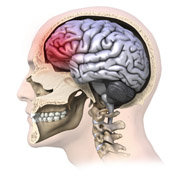Research and Innovation, UNL Office of

Center for Brain, Biology, and Behavior: Faculty Publications
Document Type
Article
Date of this Version
2018
Citation
BioResearch Open Access 7:1, 39–46.
Abstract
The precision health initiative is leading the discovery of novel biomarkers as important indicators of biological processes or responses to behavior, such as physical activity. Neural biomarkers identified by magnetic resonance imaging (MRI) hold promise to inform future research, and ultimately, for transfer to the clinical setting to optimize health outcomes. This study investigated resting-state and functional brain biomarkers between midlife women who were maintaining physical activity in accordance with the current national guidelines and previously acquired age-matched sedentary controls. Approval was obtained from the Human Subjects Committee. Participants included nondiabetic, healthy weight to overweight (body mass index 19–29.9 kg/m2) women (n = 12) aged 40–64 years. Control group data were used from participants enrolled in our previous functional MRI study and baseline resting-state MRI data from a subset of sedentary (week) midlife women who were enrolled in a 9-month exercise intervention conducted in our imaging center. Differential activation of the inferior frontal gyrus (IFG) and greater connectivity with the dorsolateral prefrontal cortex (dlPFC) was identified between physically active women and sedentary controls. After correcting for multiple comparisons, these differences in biomarkers of physical activity maintenance did not reach statistical significance. Preliminary evidence in this small sample suggests that neural biomarkers of physical activity maintenance involve activations in the brain region associated with areas involved in implementing goal-directed behavior. Specifically, activation of the IFG and connectivity with the dlPFC is identified as a neural biomarker to explain and predict long-term physical activity maintenance for healthy aging. Future studies should evaluate these biomarker links with relevant clinical correlations.
Included in
Behavior and Behavior Mechanisms Commons, Nervous System Commons, Other Analytical, Diagnostic and Therapeutic Techniques and Equipment Commons, Other Neuroscience and Neurobiology Commons, Other Psychiatry and Psychology Commons, Rehabilitation and Therapy Commons, Sports Sciences Commons


Comments
© Kelly A. Bosak et al.
Open access
DOI: 10.1089/biores.2018.0010